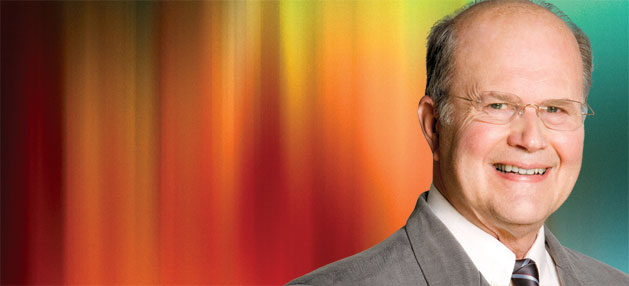
We are experiencing a new flowering of creativity and thought

David Thornburg didn’t choose the title “premier futurist in educational technology”—it was bestowed up him by Paul Saffo. An educational technology visionary for over 25 years, David has been helping educators envision a future where technology is used to further student learning. Melinda Kolk recently had the opportunity to interview Dr. Thornburg to pose questions she’s been formulating since she first heard him speak in the mid 90’s.
My approach to thinking about the future is aided by my belief that more you know about the past, the better able you are to anticipate what may occur the future. As Mark Twain said, “The future may not repeat itself, but it sure rhymes a lot.” Look for the “rhymes” in history—they are there—and use them to prepare for the future.
For example, the movable-type press was popularized in Italy during the late middle ages through the work of Aldus Manutius [Ed: A printer and publisher who created inexpensive books much like our paperbacks.], and literacy came into existence as ordinary people learned how to read. Before this time, few people knew how to read because no one could afford books.
Today’s printing press is the personal computer, and the medium for spreading ideas far and wide is the Internet. When you look at these events through the historical lens, you see that we are experiencing, or have the potential to experience, a new renaissance… a new flowering of creativity and thought.
History tells us that technology tools can be used for good or be used to perpetuate ideas and habits that may not be beneficial. We need to look carefully at our tools, and computers use in particular, and ask if each tool is truly advancing the cause of education.
My current focus is on STEM with the understanding that creativity is a foundational element in the exploration of these skills. We need to aggressively address these skills, because the United States is in worse shape than we were in before Sputnik. In 1956, U.S. colleges graduated twice as many people with degrees in physics than were graduated in 2004. If we are to remain in the midst of a technology revolution, we need to cultivate learners who can help us get there.
Because we don’t have a singular Sputnik-like goal driving us, we have lost our focus. We have allowed NCLB, and our misinterpretation of it, to make accountability our primary concern. If the test is all that matters, what reason is there for an educator to teach anything else? As Tom Peters said, “What gets measured gets done.” As a result, we have created a generation of kids who can pass a test, but often have little interest in the fields they are studying. Because the focus in on knowledge and facts, and we don’t require our students to think about big ideas or grapple with complex problems, they are unlikely to remember this content six weeks later.
One of the biggest trends right now is the excitement about netbooks. The OLPC laptops from MIT set a new benchmark for what technology should cost. With low-cost netbooks now available from almost all major manufacturers, there is no reason we can't put small, powerful $299 laptops into the hands of every student. Students can use them to truly accomplish anytime, anywhere learning.
This may be more of a dream than a prediction, but I see us moving toward inquiry-driven project-based learning. A fixed body of content that we stuff into kids' heads and have them regurgitate back is not what's really important. True education is empowering students to learn what they need to learn in order to solve the problems they think need to be solved.

Follow us on Instagram for daily inspiration

Create a thought web, cluster, flowchart, or other graphic organizer for a lesson
8 first projects to get students using technology
Creative, digital book reviews
Fun and powerful ideas with animated characters

Wixie
Share your ideas, imagination, and understanding through writing, art, voice, and video.

Rubric Maker
Create custom rubrics for your classroom.

Pics4Learning
A curated, copyright-friendly image library that is safe and free for education.

Wriddle
Write, record, and illustrate a sentence.

Get creative classroom ideas delivered straight to your inbox once a month.
Topics